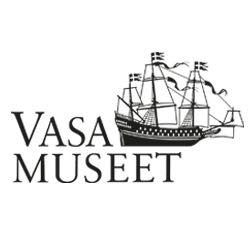
The Vasa Museum (Vasamuseet), located in Stockholm, Sweden, is a world-renowned institution dedicated to preserving and presenting the 17th-century warship Vasa, one of the most significant maritime archaeological discoveries ever made. Established in 1990, the museum was created to house and display the Vasa after it was salvaged in 1961 from Stockholm harbor, where it had rested since its fateful sinking in 1628. The ship, nearly fully intact, provides an unparalleled window into Sweden's history, maritime engineering, and daily life during the era of its construction.
History and Goals
The museum's primary goal is to preserve Vasa for future generations while expanding knowledge about the ship, its time, and its cultural significance. Since its opening, the Vasa Museum has become one of Sweden's most visited cultural destinations, attracting over a million visitors annually from around the globe. Its mission is not only to protect and maintain the physical artifact of Vasa but also to serve as a hub for education, research, and international exchange.
The Vasa Ship: An Icon of Preservation
The Vasa’s story begins in 1626, when it was commissioned by King Gustav II Adolf during Sweden’s period as a burgeoning European power. Unfortunately, due to design flaws and over-ambitious construction, the ship capsized and sank on its maiden voyage in 1628. Preserved in the cold waters of the Baltic Sea, it was rediscovered in 1956, salvaged five years later, and meticulously restored to its current state. The museum offers an unparalleled glimpse into 17th-century shipbuilding techniques, art, and daily life, supported by thousands of artifacts recovered alongside the ship.
Current Activities: Focus on Preservation
Central to the museum’s ongoing mission is the preservation of the Vasa, which poses complex technical challenges due to its age and the unique stresses caused by its original construction and subsequent centuries underwater. Most prominently, the museum is currently undertaking a ground-breaking project to replace and modernize the ship’s support structure—a vital initiative to ensure its long-term survival.
The original support system, installed in the late 20th century, is no longer adequate to meet the evolving needs of the ship’s preservation. Studies have shown that the Vasa’s wooden structure is under constant strain from its own weight, and over time, microscopic movements have threatened the ship’s stability. To address this, a comprehensive and cutting-edge replacement project is underway. This involves designing a dynamic support system capable of adapting to changes in the ship’s weight distribution and structure while minimizing physical stress on the fragile timbers.
This initiative exemplifies the museum’s commitment to integrating scientific innovation with cultural heritage preservation. Teams of engineers, conservators, and maritime archaeologists from Sweden and abroad are collaborating to ensure the solution reflects the latest advancements in materials science and conservation techniques. The project is scheduled for phased implementation, allowing the museum to remain open to visitors while safeguarding the ship.
Donations to the museum are accepted through the Vasa Rediviva Foundation. The foundation was originally created in the 1960´s to receive incoming donations for the salvage of the ship. Today, the Vasa Rediviva foundation is entirely dedicated to financing the Vasa Museum´s efforts to construct a new support system for the ship. All donations to the foundation are tax-deductible in accordance with Swedish law.
Research and Education
In addition to the ongoing support structure project, the museum remains a leader in maritime archaeological research. It collaborates with universities, cultural institutions, and independent scholars to study not only the Vasa itself but also the broader context of 17th-century maritime culture. Topics include the social history of shipbuilding, the geopolitics of Sweden’s empire during the Vasa era, and the conservation challenges of waterlogged wood.
The museum’s educational programs are central to its mission. It offers guided tours, lectures, and interactive workshops for students, families, and researchers. Digital initiatives, such as virtual tours and online databases, have expanded the museum’s reach, making its resources accessible to audiences worldwide.
Future Plans
Looking ahead, the Vasa Museum aims to continue enhancing its preservation techniques and expanding its role as a global leader in cultural heritage. The completion of the new support structure will serve as a model for other institutions managing fragile artifacts. Additionally, the museum plans to develop new exhibitions that explore the global connections of 17th-century Sweden, shedding light on trade, warfare, and cultural exchange during the Vasa era.
Donors
David Pugl
